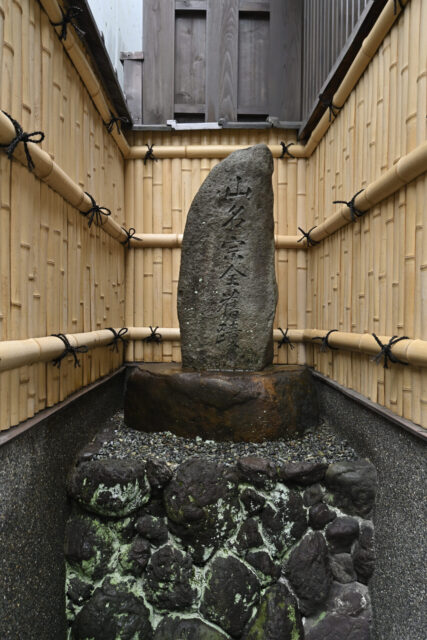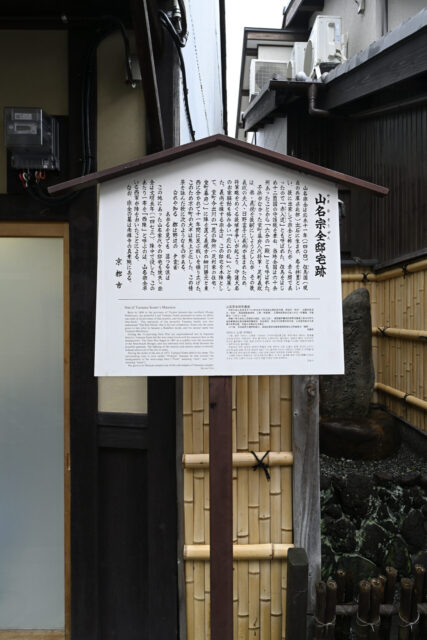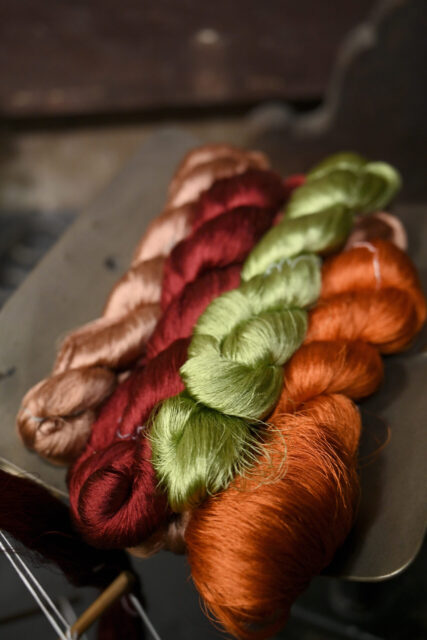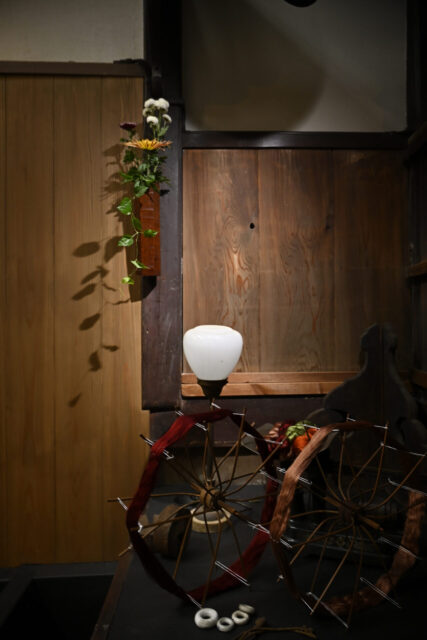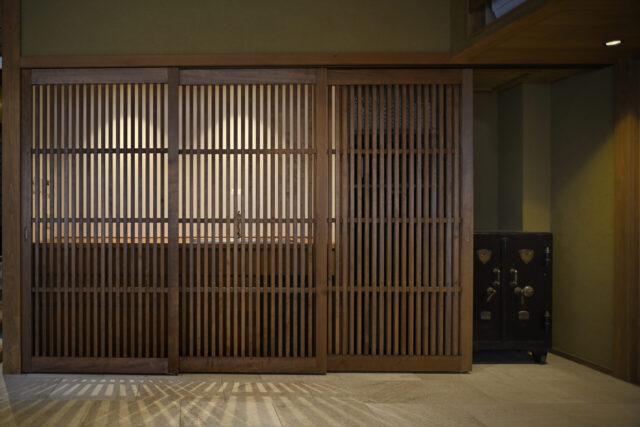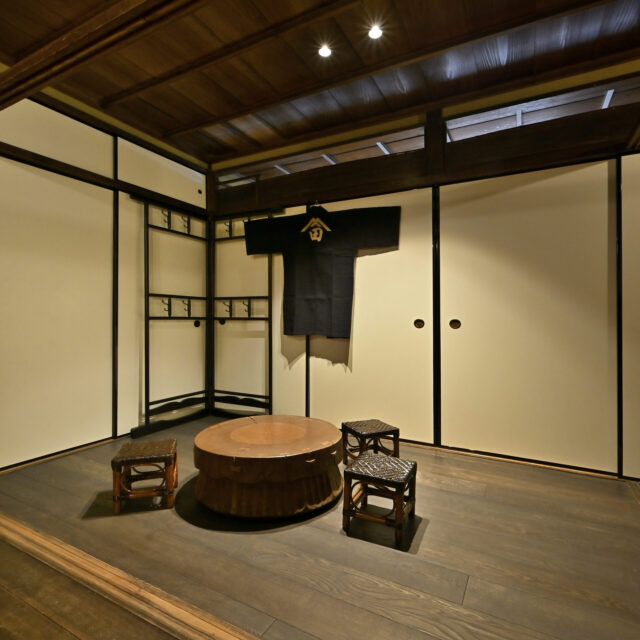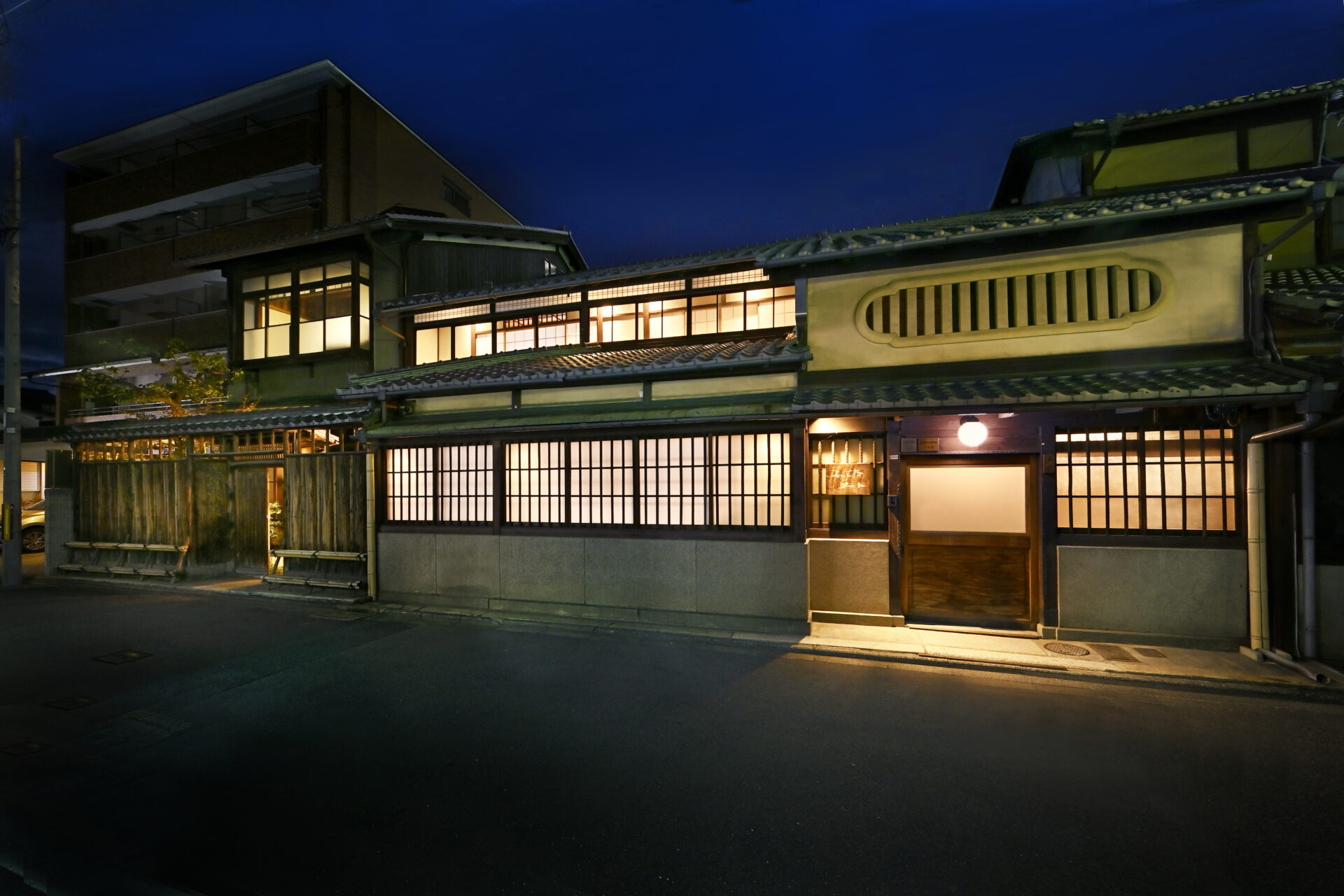The Fujita Residence is located in the town named Yamana-cho, derived from Yamana Sozen, a warlord in the Muromachi era (1336-1568) who resided in the town. The district is also known as “Nishijin” (West Camp), because Yamana Sozen was the head of the Western Army during the Onin War (1467-1477). There were a number of textile artisans in the town, but they left the town during the war. After the war, they returned to the town and restarted textile production. Now the district is known worldwide for its Nishijin-ori textiles.
The Fujita family lived in the center of the Nishijin district. The family was a leading textile manufacturer in Nishijin during the Taisho era (1912-1926) and the early Showa era (1926-1989), and they possessed a great number of weaving looms. The store (on the east side of present-day Fujita Residence) was too small for the increased number of weaving looms, thus the family bought the house adjacent to it. They had the new house remodeled according to the liking of Kitagawa Heihachi (the father of Kitagawa Heiro, a dye/weaving artisan and living national treasure), who was father-in-law of the then head of the family, and set up the rooms with sumptuous items. Examples include door handles specially designed after the shape of a loom shuttle using the highest quality wood, and furnishings custom-made for each room.
The east side of the house is preserved in the traditional machiya (townhouse) style, while the west side was designed with the owner paying great attention to every detail. Every room and space in the Fujita Residence presents craftsmanship, trust between the people involved in the construction, as well as the lifestyles of the people who lived there. The house tells us the history of Nishijin-ori textiles as passed down in the Nishijin district, part of the foundation of the culture of Kyoto today.
The main part of the house was rebuilt in 2019, and renovated into an inn which is available exclusively for a single group of visitors per day. You will surely enjoy the tradition of Nishijin while immersed in the authentic surroundings of a historic Kyo-machiya townhouse at the Nishijin Fujita.
